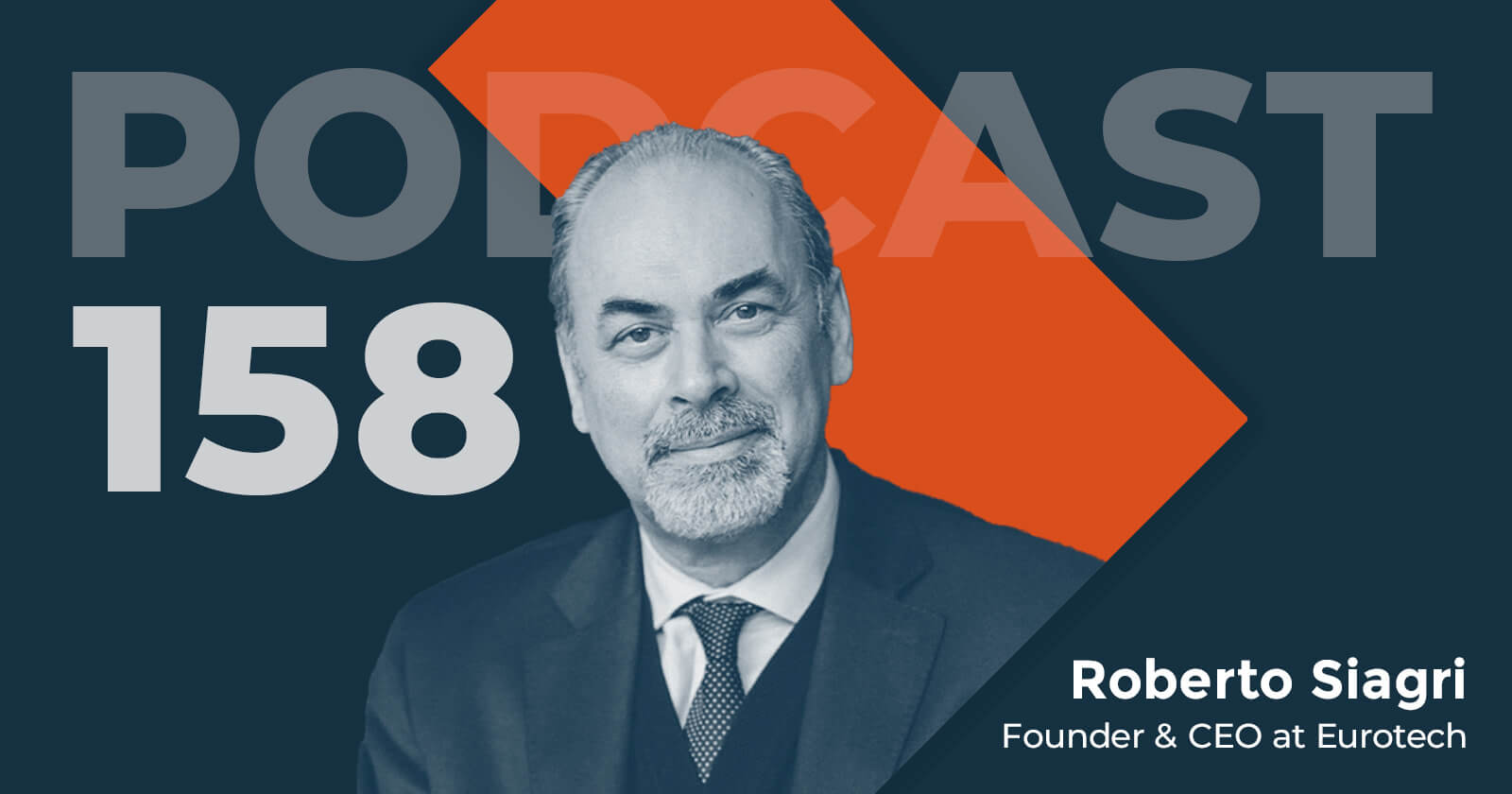Spotlight Series: Seeing Around Corners with Rita McGrath
Ed Maguire

This series highlights the key insights and lessons from our Digital Leadership series of podcasts. We spotlight the important takeaways from our interviews in an accessible format. The following insights come from Rita McGrath, thought leader, renowned speaker, author and Professor at Columbia Business School. Stay tuned for the full podcast interview with Rita McGrath, in the meantime, take a look at our full library of podcasts.
Could you share a bit of the forces that have shaped your views on strategy, and what’s attracted you to the work that you do?
When I first started with my academic studies, the field of strategy was very much focused on industry analysis, and all the cool kids were doing ordered entry studies, market share impact, and that sort of thing. I was really much more interested in innovation and the creation of new industries, and what became pretty clear to me was that a lot of those approaches to strategy, which presumed equilibrium, and which presumed stability, were just not a good fit for what most of the people I was talking to were dealing with on a regular basis. That really got me interested in strategy as much more of change and dynamism, than strategies of stability.
You wrote a really influential paper on Discovery Driven planning, and you’re credited as the key innovator of that concept. Could you discuss the principles behind Discovery Driven planning, and how that work has provided a foundation for the work that you’ve been doing subsequently?
Discovery-driven planning had its seeds in a real puzzle, which is that large established very well-run companies, like Disney for example, kept getting themselves into these just absolute disasters when they tried to get into areas that were new to them. We’re talking Disney, General Electric, AT&T, real icons of American industry, and yet when they got into new areas they ended up with these completely total disasters. When you study the case studies that accompany these stories, what you find is this pattern which is a pattern of untested assumptions taken as facts, very few opportunities to test things, people just charging on full speed ahead down the torpedoes, all the funding up-front at once, big teams going after these things.
What my co-author and I realized was that what we were looking at was a fundamental disconnect, in how organizations need to be thinking about planning for the future, when the future was uncertain. The basic idea was that you can’t plan for an uncertain future the way you can plan if you’re basing your ideas on a strong platform of previous experience. The core idea was, how do you plan with discipline when your main challenge is learning, rather than execution, and that generated a whole body of work which I guess now has become part of the whole start-up rubric, a lot of people have taken it now; people have forgotten where it came from, and forgotten how radical it was at the time! At the time people looked at us as though we had two heads, and were like, ‘Wait a minute. You mean you can’t plan to the launch of the product?’ We were like, ‘No, you can plan, but you can plan to your next checkpoint or milestone, you really can’t do much more planning than that’.
The whole philosophy was having a discipline, but make it a discipline that’s appropriate to learning, at low-cost, as fast as you possibly can, through iteration and testing. That’s now come to be taken for granted as the conventional way we do things, but back then it was pretty strange and pretty radical.
How has the discovery-driven model been embraced in different ways across different cultures, in the globe?
Well, in an interesting way I think what attracts what I’ll call failure-resistant cultures to discovery-driven planning is it gives them a different way of framing it. For example, there are many German companies that I know of who have really adopted it, because it gives them the chance to apply their famous discipline and their famous structure around things to an uncertain environment, and say, ‘Okay, let’s learn from it’. One of the examples that I use in my new book is a German company called Klöckner which really wanted to go digital in a big way, but realized that trying to go digital all at once, these sort of all-in digital transformations you read so much about, which by the way is another shade of this! We’re going to go digital, but we haven’t got a clue how to do it, so we’re going to hire some big consulting firm and throw millions at it, until they just fix the problem! It’s the same thing we saw back in the nineties when people had all these failed ventures. But anyway, this German company Klöckner, basically started with a couple of engineers in an entrepreneurial hotspot of Berlin, and their mandate was very simple, ‘Try something, anything that we think could improve the customer experience with Klöckner’.
So, it was starting really on a small scale relative to the whole organization, starting with a specific but not specifically defined, ‘Here’s what we want you to do, but go figure how to do it’, was left pretty much up to the small team, and that’s exactly in the spirit of discover-driven planning.
One of the important concepts that you’ve focused on in your most recently published book is the End of Competitive Advantage, and I’d love to understand a bit of what you mean by that, and what the implications are in terms of rethinking how businesses large and small approach their own strategic positioning, and competitive dynamics.
The End of Competitive Advantage was really a nod to the prescription and conventional strategy, I’ll call it, which said the Holy Grail what you want in all cases is to achieve a beautiful thing called a sustainable competitive advantage, when you achieve an attractive position in an attractive industry, and then you seek to erect entry barriers to prevent others from following you in, and to the extent that you can do that, and that there is attractiveness in the industry, in other words, there is demand; you can enjoy streams of profits for a long period of time, which are essentially monopoly profits. Not pure monopoly in the illegal sense, but monopoly in the sense that you’re the only game in town, and everybody’s got to come to you, and that’s the dominant thing.
Many of our tools of strategy and our logic of strategy and all that industry analysis I was alluding to earlier really had to do with this fundamental concept, that you have this attractive position, you erect moats about it, and your competitive advantages last therefore for a long-long time, because it’s hard for others to copy. And what I’ve observed over the intervening years since I’ve been in the field is that in more and more parts of our economy, that logic not only isn’t accurate, it is actually dangerous, in that people achieve an advantage and they think it’s going to last, and it doesn’t.
My core argument is, if you think about a lifecycle, you have a competitive advantage, there’s a period at which it gets conceived, there’s a period in which it gets built, and that’s really the different aspects of the innovation process; you think there’s something new, you incubate it, and eventually you grow it to be a meaningful part of your parent corporation. Then you have this lovely period of exploitation where you’re making money, customers are flocking to you, your offerings are more attractive, that’s great. But then in any market without a lot of entry barriers, there will be competition, they’ll come, they’ll copy, even if they don’t copy you exactly, they may be able to match what you can do.
The lifecycle of a competitive advantage is - it's born, it gets built, it gets exploited for a while, and then it comes under pressure, and now whether it erodes or not is a secondary question. Sometimes you can figure out ways of extending it, as Netflix has by the way through its previous two incarnations of life, so it started out as a DVD player, then it was moved to be a streaming player, and then it was an original content player, and now finally it’s been matched on a number of those different dimensions, so the big question mark is, what do they do next? And we’ll see.
You have hit on a topic that I think is really interesting, which is the concept of internecine warfare in large organizations.
I think that’s critical, and I think with digital, the more digital you are, the more important it is, because digital doesn’t respect organizational structural boxes and arrows! Digital has absolutely no idea what those are. A second thing is, digital doesn’t respect industry, digital leaps gaily across industry lines, you feel these people kind of, bop-bop-bop.
Back to the leadership challenges, I’ll start with Satya Nadella, because he’s a real hero of mine. A couple of policy things he put in place right at the beginning of Microsoft, he said, ‘Look, profits, revenues, and all those things we look at, those are all great, and those are all important, but they are lagging indicators, they do not tell us anything about the future, they are today’s outcomes of yesterday’s actions. What I want this entire company to be refocused on is leading indicators, and in the case of the online, and in the case of the world they’re moving into, which is really the world of the cloud, leading indicators all have to do with customer engagement, and you don’t get customer engagement unless they love our products. It literally talks about customer love!
I remember I was hired to give a talk at a Microsoft Leadership Conference, and fly all the way out to Bellevue, Washington, I’m in this big hotel where the conference is being held. I race into the ballroom because my flight was a little late, open the door, and on this big screen in the back of the room taller than me, is this word ‘Empathy’! I’m thinking to myself, ‘Damn, I’m in the wrong conference room!’ because if you thought of historical Microsoft, you could not think of a word too much farther from the heart and soul of the way that company used to operate.
But Nadella’s point is, if you don’t have empathy for your customers, you can’t understand enough about them to gain customer love, and if you really believe that’s important, you’re going to have to really work on that. So, that’s been a principle, and I think the principle I would extract from that is, everybody in the company is thinking about what leading indicators are, and that’s what he’s paying attention to.
Your new book, Seeing Around Corners - I would love for you to share a thesis and some of the key points, and I see that it will be out in September.
Delightful. The book is called, Seeing Around Corners – How to Spot Inflection Points in Business Before They Happen, and the core thesis is that inflection points which represent a moment when the rules of the game change. An example would be the advent of these direct to consumer companies, on top of a conventional retailer, the rules changed, it didn’t used to be it was safe or economical to reach a million customers all by yourself, without going through a third-party retail outlet; today it’s possible. That’s an example of an inflection point, it changes the assumptions that your business is based on.
The book is about three things, how do you spot them? The first part of the book is, how do you put yourself in a position to see where they’re coming. The middle point of the book is how do you decide what to do about them. And the whole discovery-driven idea comes back into its own, right then and there, because a lot of this is really new, so we don’t know the answer, we have to go find it out. The third part of the book is, having decided what you’re going to do, how do you now bring the organization with you? Because it’s not enough to know that it’s coming, and it’s not enough to say, ‘This is where we should go’, it’s a whole group of people that have to agree and be brought along, and mourn what used to be, and prepare themselves for what is to come. There’s a whole lot to it.
So, the book really proceeds in those modules. Now the thing about an inflection point that I find particularly fascinating is, it’s neither good nor bad, if you see it and you mobilize your organization to capitalize on it appropriately, it can take your business to new heights. If you avoid it, miss it, or are in denial that it’s happening, it can cause your organization to flounder. So, it’s not good or bad, it’s how you play it, which is why as a strategist that strikes me as so interesting.
The other thing I think is important about the book is that these things don’t happen overnight, they feel as though they do when they finally make themselves known, but usually they’ve been brewing for a long-long time before they show up on your doorstep fully formed.
The overarching theme of the book is, if you see it in time and are prepared to act in time, you can benefit from these inflection points, it doesn’t happen overnight. Sure, there are tsunamis, there are things you can’t anticipate, but most of the stuff in business you can get a sense for well before it turns up on your doorstep.

Momenta Partners encompasses leading Strategic Advisory, Talent, and Investment practices. We’re the guiding hand behind leading industrials’ IoT strategies, over 200+ IoT leadership placements, and 25+ young IoT disruptors. Schedule a free consultation to learn more about our Connected Industry practice.



